How To Start Mountain Biking: An Ultimate Guide For Beginner Shredders
Need some tips on how to start mountain biking? Learn everything you need to know about getting into mountain biking including gear & more.
So you want to learn how to start mountain biking? Awesome! I totally support that decision 🙂
Mountain biking is my favorite thing in the world and I’m confident that you’ll love it too. You’ll get to explore amazing and beautiful places, have a blast on the trails with friends, gain confidence on and off your bike (seriously, mountain biking helps with real-life stuff too!), get fit and strong, and so much more.
But I also know that the world of mountain biking can be a bit intimidating. I’ve been there! Questions like:
- “What kind of bike do I need?”
- “What should I wear”
- “Is mountain biking dangerous”, etc…
might be running through your head.
As someone just starting out, it can all feel a little overwhelming. But don’t let those uncertainties hold you back. Just like any sport, there is a learning curve – and sometimes it’s steep, but once you commit to learning and stepping outside of your comfort zone, that’s when the fun really begins.
I’ve been mountain biking for years and I’m still learning. That’s one of the things I love about the sport. But I’ve also figured out a thing or two about mountain biking that I want to share with you as you get started. Like how not to die (that’s important), what gear is really essential, how to find fun trails, and what to expect on your first couple of rides.
I love introducing new people to mountain biking, so if you have questions and want answers on how to get started, read on!
What exactly are you getting yourself into?
Mountain biking first started gaining popularity in the US in the 1980’s in California when adrenaline-seekers took their rickety short-travel bikes and bombed down steep fire roads and sketchy illegal trails.
If you watch some of the early videos, you’ll question why anyone thought this would ever be fun.
Thankfully, over the next few decades, mountain biking – and mountain bikes – have come a long way.
Today, there are professionally built flow trails, mountain bikes with modern geometry that make going uphill and downhill much more fun, lift-served bike parks, and even electric mountain bikes!
The world of mountain biking has exploded and it’s a great time to learn how to start mountain biking. Here are some pointers to give you a better idea of what you’re getting yourself into:
Types Of Mountain Biking
1. Cross-Country Mountain Biking
Cross-country is the most approachable style of mountain biking and what you will probably be doing the most of as you’re just starting out. Think hiking, but on a bike.
These trails tend to be less technical and more mellow in grade and they often traverse through beautiful backcountry terrain with great views. Cross-country mountain is great for riders who are new to the sport because most XC (short for cross-country) trails don’t require advanced bike skills or a high level of fitness and they allow beginner riders to really get a feel for riding a mountain bike on singletrack trails.

2. Enduro or All-Mountain Mountain Biking
Enduro-style riding – or All-Mountain riding – encompasses all types of terrain from cross-country pedaling to rocky and rowdy descents and everything in between. It’s cross-country riding taken up a notch or two.
There are typically bigger climbs, steeper descents, and more technical features, both manmade and natural, to navigate.
A day of Enduro riding might involve catching a gondola to the top of a mountain, pedaling along a sidehill traverse, and then bombing to the bottom on a rowdy downhill track.
Or a day of Enduro riding can mean pedaling up a technical switchbacked climb and then descending down a flow track. With Enduro, the world is your oyster.
(The term ‘Enduro’ comes from mountain bike racing. Enduro racers tackle a wide range of terrain throughout the competition. An Enduro race may span several days with each day involving multiple race stages over a variety of different trails).
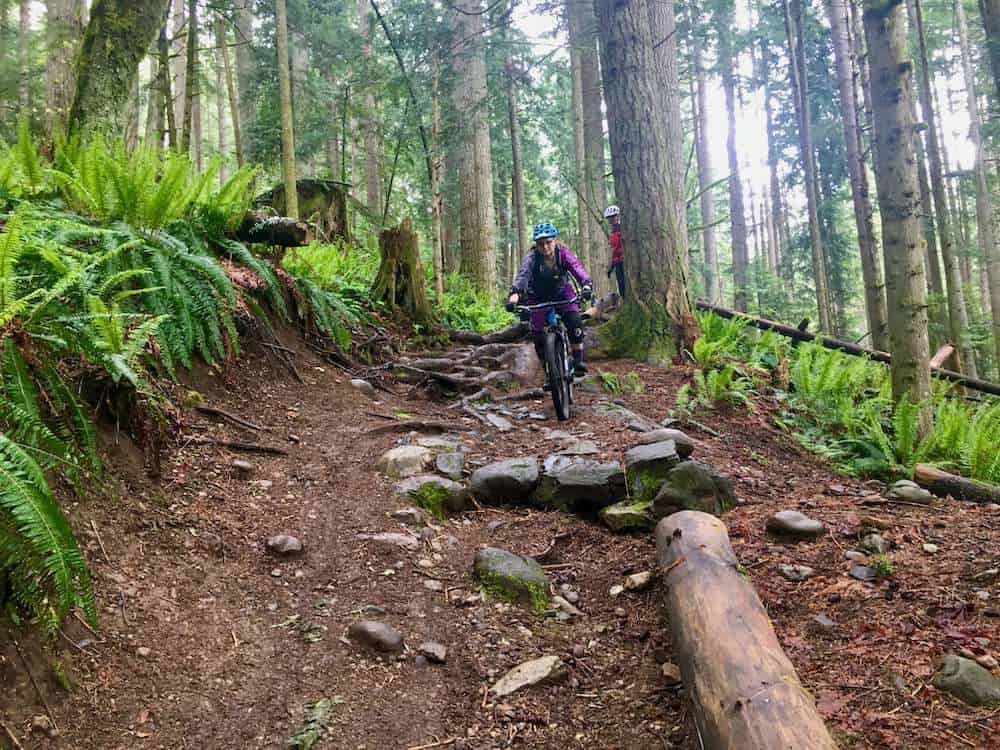
3. Downhill (DH) Mountain Biking
Downhill mountain biking typically refers to riding on a specific downhill bike. Downhill bikes are much heavier than Enduro or cross-country bikes and typically have a double-crown fork and coil shock. These beefy shocks make riding through gnarly terrain feel much smoother and more stable at speed.
Downhill bikes are also geared low, so they’re not meant to be pedaled uphill or even really along flat terrain. You can usually find downhill mountain bikers at lift-served bike parks, but DH tracks can be found anywhere there is a steep pitch.
There is a bit of a gray area between Enduro mountain biking and downhill mountain biking. Enduro riders can – and do – ride downhill tracks, but the main difference is the bike. Downhill bikes are made to go downhill and through some crazy terrain at speed while Enduro bikes are designed to do a bit of everything.
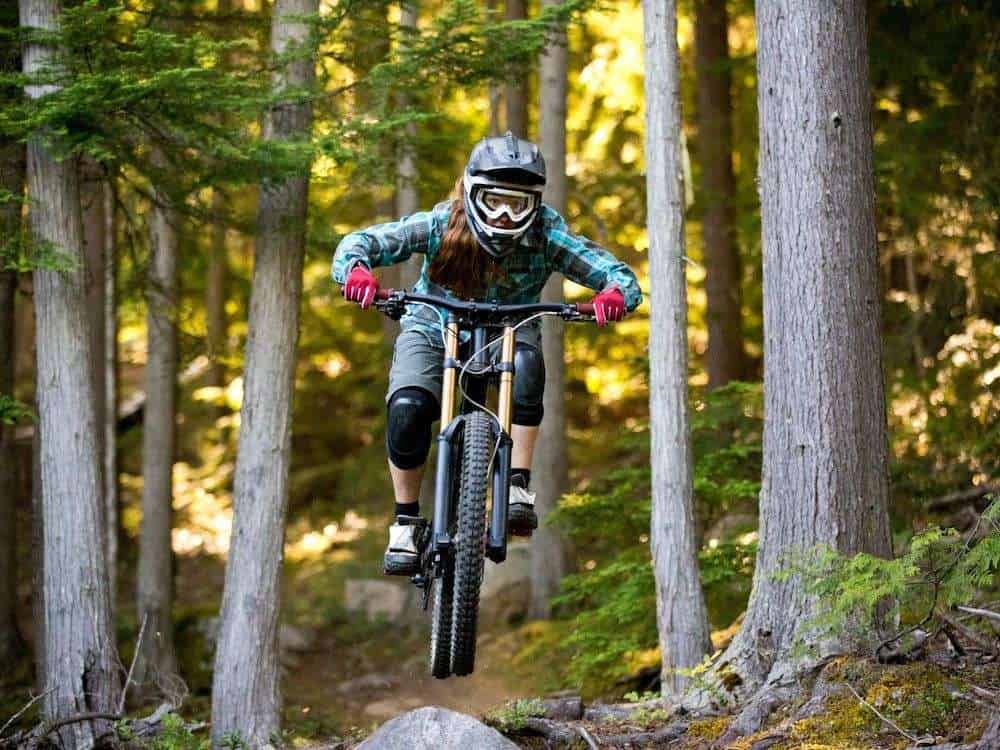
Read next: Looking for a new bike? Check out the Best Beginner Mountain Bikes that will help take your riding to the next level.
Is mountain biking hard?
Well, that depends on what you consider hard… Yes, it takes effort to pedal uphill and you may feel like you’re dying at times. Just like any form of exercise, mountain biking can be physically challenging especially when you’re just starting out and your muscles aren’t conditioned to riding a bike.
As you explore more trails, you’ll also come face to face with features that you can’t fathom ever being able to conquer. Rock rolls, rock drops, skinny log rides, wooden ramps, etc… are all features you will encounter on the trail and some of them are scary!
But the more you ride, the more confident and stronger you’ll get and you’ll be tackling those features in no time.
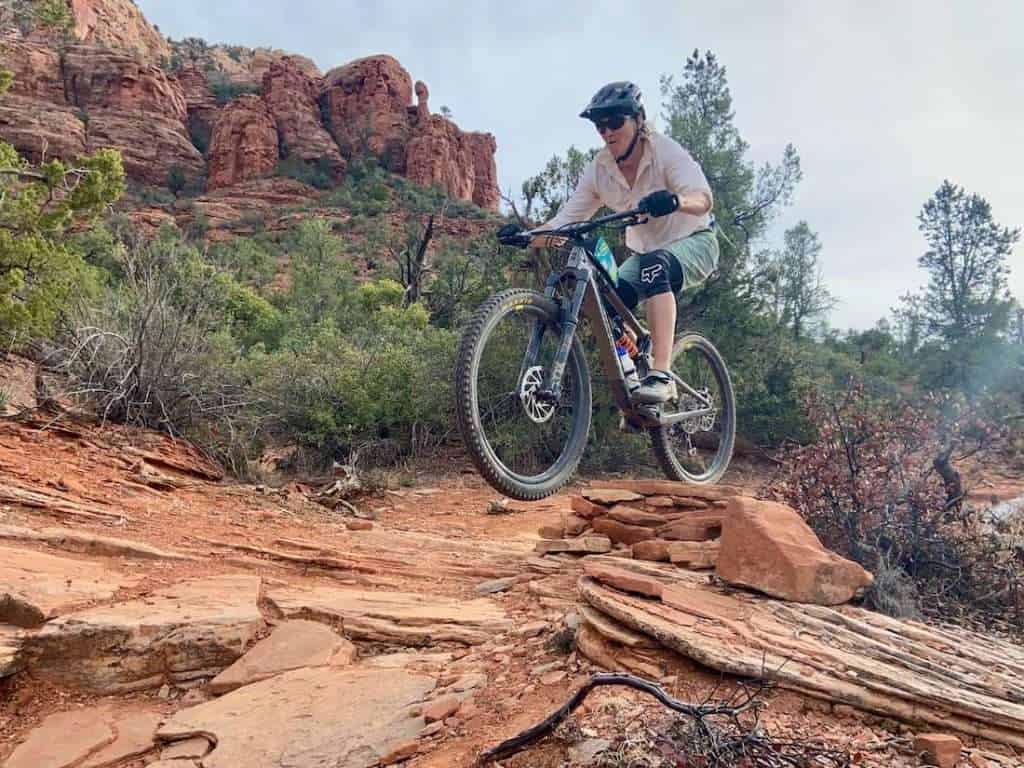
It’s also important to remember that just like any other sport, there is progression and there are setbacks.
Some days you’ll be fast and smooth and crushing the climbs and other days you’ll feel like pedaling up a mellow grade is the hardest thing ever.
But don’t shy away from learning how to start mountain biking because you’re afraid that it’s too hard. There are beginner mountain bike trails out there that are great to learn on and once you get a feel for the bike on the easier trails and increase your fitness, guaranteed you’ll want to tackle the harder stuff.
If you’re still concerned that mountain biking may be too hard for you or you’re worried about keeping up with your riding partners, consider trying an e-bike!
Many mountain bikers are turning to electric bikes because they’re a great way to get outside and enjoy the trails without leaving you feeling shelled at the end of each ride.
Is Mountain Biking Dangerous?
I won’t lie, mountain biking can have some pretty high consequences and it’s 100% certain that at some point you will crash, especially when you’re just starting out.
But the good news is that the more you ride, the better and more confident you’ll become, and the less you’ll find yourself in the dirt. I crash way less now as an experienced mountain biker than I did when I was just starting out even though I’m riding harder stuff and going at faster speeds.
It’s also important to point out that you don’t have to ever ride the rowdy, scary stuff. Mountain biking for you might be cross-country trails through the beautiful backcountry. You don’t have to ride the black or doubleblack trails ever.
On the other hand, you might find that you actually love downhill riding, and the more you do it, the less scary it becomes! You never know if you don’t try. Either way, it’s a good idea to wear body armor protection while you ride, which I’ll cover in the gear section below.
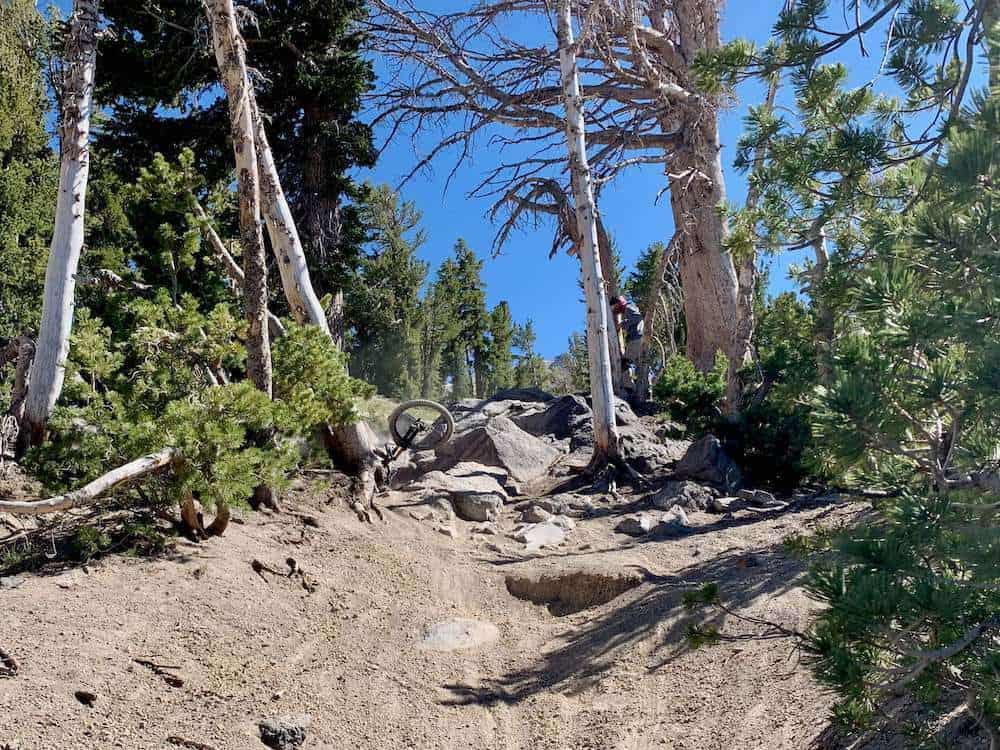
Read next: Want to know what you’re getting into? Read about the most common mountain bike injuries.
How to Choose Your First Mountain Bike
In order to mountain bike, you need a bike, right?
There are dozens of factors to consider when purchasing a mountain bike, but as a beginner rider, I don’t want to make it too complicated. Any bike is a good bike when you’re first learning how to start mountain biking.
To keep it simple, here are the four biggest factors to consider when shopping for your first bike:
- Bike type (full-suspension or hardtail)
- Frame size (XL, S, M, L, XL)
- Wheel size (27.5” or 29”)
- Frame material (carbon or aluminum)
For a more detailed guide on what to look for in a new mountain bike, head over to my post on How To Buy A Full-Suspension Bike.
1. Bike type
Mountain bikes fall into two main categories: full-suspension mountain bikes and hardtails.
Full-Suspension Mountain Bikes
Full-suspension mountain bikes have both a front fork and a rear shock that allow the bike to absorb bumps and bounces along the trail. Just like a car, without suspension, the ride would feel super bumpy and uncomfortable.
Front fork travel for full-suspension mountain bikes can range from 100mm for short-travel cross-country mountain bikes all the way up to 200+ mm of travel for double-crown downhill (DH) bikes.
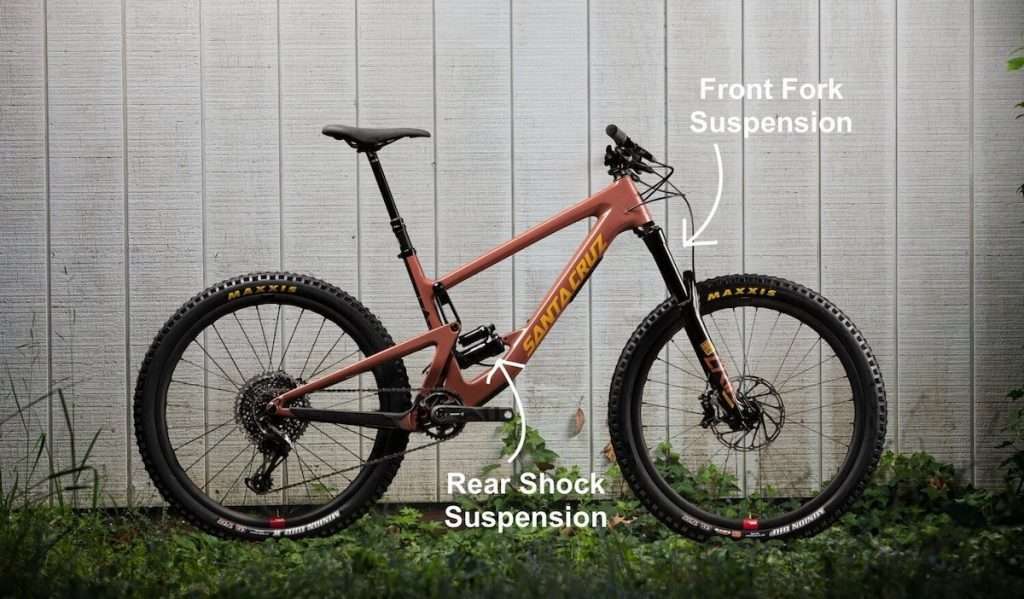
A short-travel full-suspension mountain bike (100mm-130mm front fork travel) is great for cross-country riding without a lot of technical features while a mid-travel full-suspension mountain bike (130mm-160mm front fork travel) is more ideal for all-mountain or Enduro style riding.
TIP: For your first full-suspension bike, I recommend choosing a short or mid-travel bike with 100mm-160mm of front fork travel.
- The benefits of full-suspension mountain bikes are that they’re a smoother ride, you can take them down rowdier trails, and you can progress to harder features.
- The drawbacks of full-suspension bikes are that they don’t typically climb as well (although they do just fine for most types of riding), they’re a bit heavier than hardtails, and they’re more expensive.
Hardtail Mountain Bikes
Hardtail mountain bikes only have front fork suspension, no rear shock. They can be great trail bikes if you plan on doing mostly cross-country riding and want to prioritize speed and efficiency over comfort on technical sections.
The drawback, though, is that hardtails can be a little limited if you want to progress into more advanced riding.
Most hardtail mountain bikes come with 100mm-130mm travel forks.
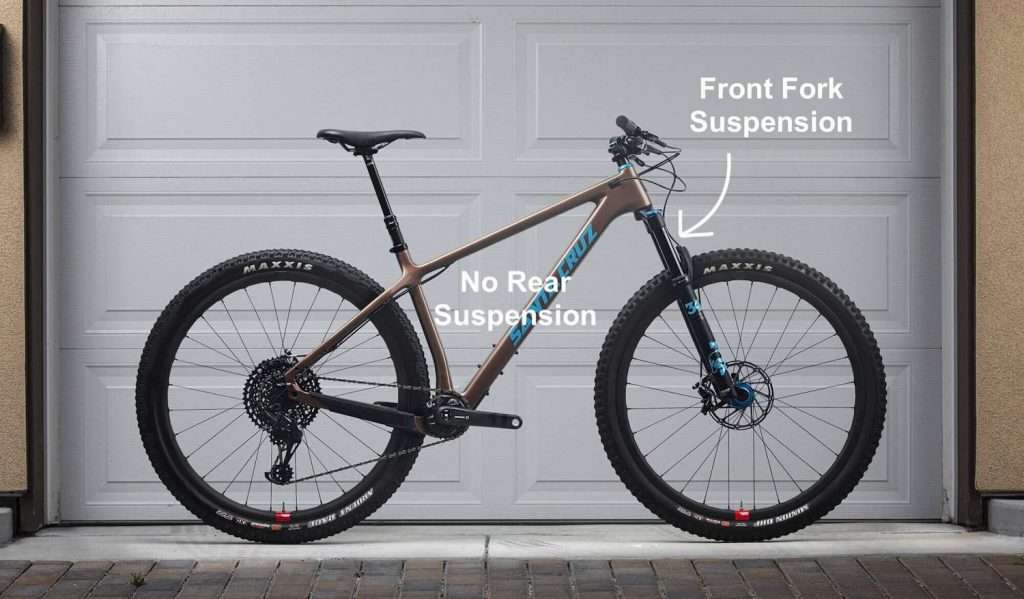
- The benefits of hardtails are that they’re lighter in weight, they’re more efficient (you don’t lose speed or momentum through the rear shock), and they’re less expensive.
- The drawbacks of hardtails are that they’re not as smooth when going over rocks, drops, and other technical features, they don’t come with as much travel, and they’re not as much fun 😉
What about women’s mountain bikes?
If you’re a woman looking to get into mountain biking (yay!), there are a few women-specific mountain bike brands and bikes on the market – Juliana and Liv being the main two. To learn more about women’s mountain bikes and whether you need one, head over to this post.
2. Frame size
The second thing you’ll want to consider when buying your first mountain bike is frame size. Frame size is pretty standard because it’s based on your height, but it’s really important to get right.
An ill-fitting bike can make or break your mountain biking experience. Don’t buy a bike that is too big or too small for you.
All bike brands will have their own sizing charts and recommendations.
3. Wheel size
Wheel size is another factor to consider when buying a bike. The two main wheel sizes for mountain bikes are 27.5” and 29”. There is no ‘right’ answer when it comes to choosing a wheel size as it comes down to personal preference, but hopefully, the tips below help you understand the differences.
If you can, I recommend trying to hop on both a 27.5” and 29” mountain bike to see how they feel before making your decision.
26” Wheels
This wheel size is pretty much obsolete nowadays (for adult-sized bikes) unless you’re buying a used one. You’d be hard-pressed to find a 26” wheel on a new mountain bike. Why? Because 27.5” and 29” wheels are much more efficient and better at getting you and your bike over and through obstacles on the trail.
If you buy a used 26” wheel bike, know that it’s probably pretty dated and may require significant maintenance and repairs.
27.5” Wheels
27.5” wheels tend to be better for riders on smaller bike frames (like S or XS), although that’s definitely not a rule set in stone. Again, it comes down to personal preference.
Many riders choose 27.5” wheels because they feel more responsive and playful than 29” wheels. This is good if you plan on learning how to jump or will spend most of your time playing around on bike park features.
29” Wheels
29” wheels tend to be faster and more stable at speed than the smaller 27.5” wheels.
29er’s also climb really well and they roll over rocks and roots smoothly and efficiently.
However, because of their larger size, they do tend to be less nimble and agile, especially when turning corners.
Mixed wheel bikes (aka mullets)
Another option that is gaining popularity among mountain bikers is a mullet bike, which is what I personally prefer for my downhill-focused bikes.
A mullet bike has a 29” front wheel and a 27.5” rear wheel, giving you the best of both worlds – speed and smoothness up front and nimble agility in the rear.
Some bikes are being manufactured and sold as mullets while others need to be converted.
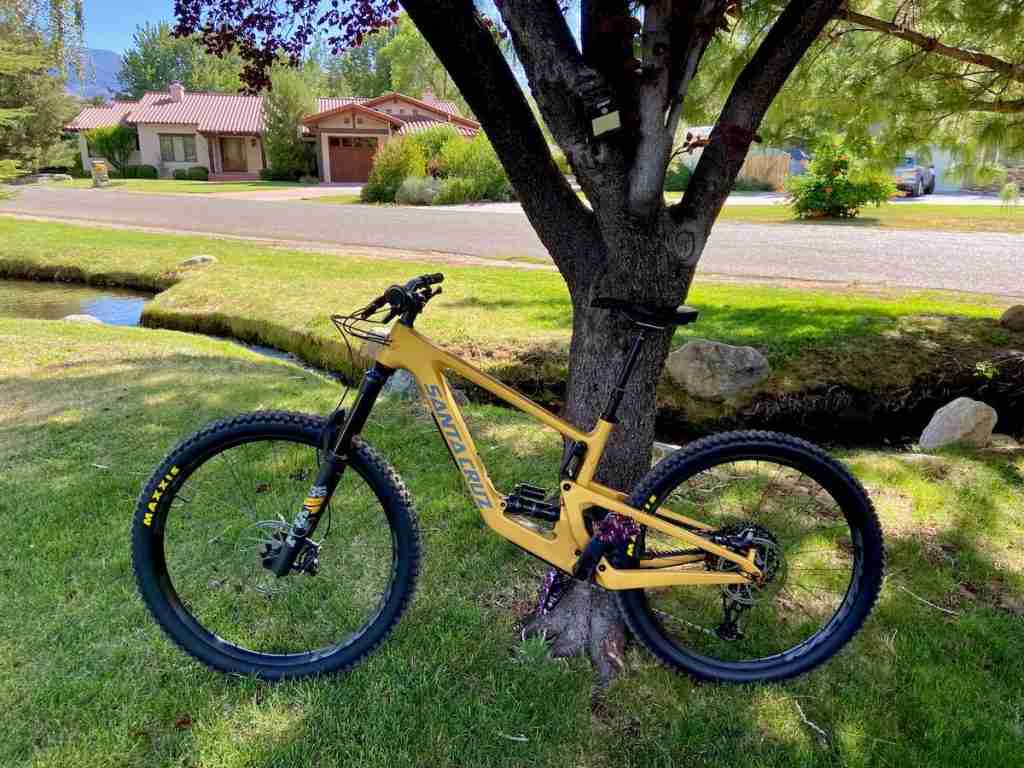
4. Frame material
A final consideration when buying a mountain bike is choosing your frame material. Carbon or Aluminum?
Many mountain bikers choose carbon if they can afford it (carbon is at least 1.5-2 times more expensive than aluminum) because of its lightness and strength, but if you are just starting to learn how to mountain bike and this is your first bike I honestly would recommend getting an aluminum frame.
Think of this first bike as your training wheel’s bike. You’ll crash it, you’ll scrape it, you’ll scratch the stanchions on the front fork and it’s really not worth shelling out thousands of dollars more on a beautiful carbon bike if it’s going to see this kind of abuse.
That being said, if you’re only planning on riding mellow cross-country trails and you have the money to shell out for a carbon bike, then sure, go for it! But if you want to play around at the bike park and really hone your skills, then an aluminum frame is a great first choice.
Where to Shop for a mountain bike
If you’re buying a new mountain bike, your local bike shop is a great place to start. The salespeople will be able to answer any of your questions and you’ll be able to take the bikes out for test rides.
If you prefer to shop online, here are a few of my favorite retailers:
If you’re planning on buying a used bike, be sure to check out this post on How To Buy A Used Bike.
Mountain Biking Gear To Get you started
When you’re first learning how to start mountain biking, it’s not necessary to go out and purchase a whole new wardrobe of bike gear. That can be expensive! But, there are a few essentials that you’ll need to get started (ahem, a helmet!).
I’ve written up a few posts on mountain bike gear, so be sure to check them out as you start to gear up for your first rides:
- Essential Mountain Bike Gear List
- What To Wear Mountain Biking
- The Best Women’s Mountain Bike Shorts
- The Best Women’s Mountain Bike Jerseys
- The Best Women’s Mountain Bike Shoes
- A Complete Guide to Mountain Bike Protective Gear
- Mountain Bike Hydration Packs
How to find Beginner-Friendly Trails
Now that we’ve got all the details out of the way, it’s time to ride! It can be hard to know where to ride, though, so hopefully, these tips will point you in the right direction.
Best apps for trail-finding
I highly recommend downloading the TrailForks app, which makes it SO EASY to find beginner-friendly trails. There is a 7-day free trial and unlimited use around your home trails.
If you want to upgrade to the pro-plan, it’s $36 a year and gives you unlimited access to trail maps that can be downloaded for offline use. It absolutely pays for itself and if you plan on exploring mountain bike trails farther from home, it is essential.
You can also access TrailForks online, which is free to use.
Another app option is MTB Project. This is a free app and website supported by REI and it is a decent alternative to TrailForks. They don’t have as many trails listed on MTB Project, however, because only ‘legal’ and sanctioned trails are allowed.
For both apps, I recommend sticking to green and blue trails at first, which are suited for beginner and novice riders just learning how to start mountain biking.
Talk to your local bike shop
Another great resource for finding beginner-friendly trails is your local bike shop. Stop in and ask them what trails they recommend for newer mountain bikers.
Many shops will even have maps of the local trail networks and they can help you with any questions you have about your bike.
Ride with friends
If you have friends that mountain bike, let them know that you’re just getting started and would love to have them show you around some easier trails.
Even if they’re better than you, I guarantee that they’ll be more than happy to give you a tour.
Also, one of the best ways to get better is to ride with people that are better than you 🙂
What to expect on the trails
So you’re all ready for your first ride, but what should you expect out on the trails? Well, that depends. All mountain bike trails and destinations are different so there’s no ‘one thing’ you should expect to come across on the trail.
For example, Vermont riding is filled with rocks and roots and short, punchy climbs while much of southern Utah mountain biking is on rock slabs (aka slickrock).


There are a few universal mountain bike features and terms, though, that you’ll hear wherever you’re riding. I have a post on Mountain Bike Slang and Terminology to help you get up to speed on the lingo, but here are a few common ones:
- Rock garden – a section of trail that features a lot of rock obstacles. Some rock gardens are easy to navigate over while others are extremely technical.
- Drop – a feature (either natural like a rock or manmade like a wooden ramp) that sends you and your bike from a higher elevation to a lower elevation. Typically drops require both wheels to leave the ground.
- Berm – a built-up turn that allows you to easily corner at speed. These are very common on flow trails at bike parks.
- Roller – a feature on the trail, like a rock, that you can ride up and over without your wheels coming off the ground.
As a general rule of thumb, if you choose green or blue-rated trails, these should be beginner-friendly and not have too many challenging features and obstacles.
I recommend sticking to these trails and slowly working your way up to the more advanced trails and features.

how to Prepare For your first ride
Before heading out on your first ride with your new (or new-to-you) mountain bike, there are a few things you should do to help you prepare:
How to Transport your bike To the Trailhead
Chances are, unless you live in an amazing mountain bike destination with trails right outside your door, you’ll need to transport your bike in your car or truck. There are several options:
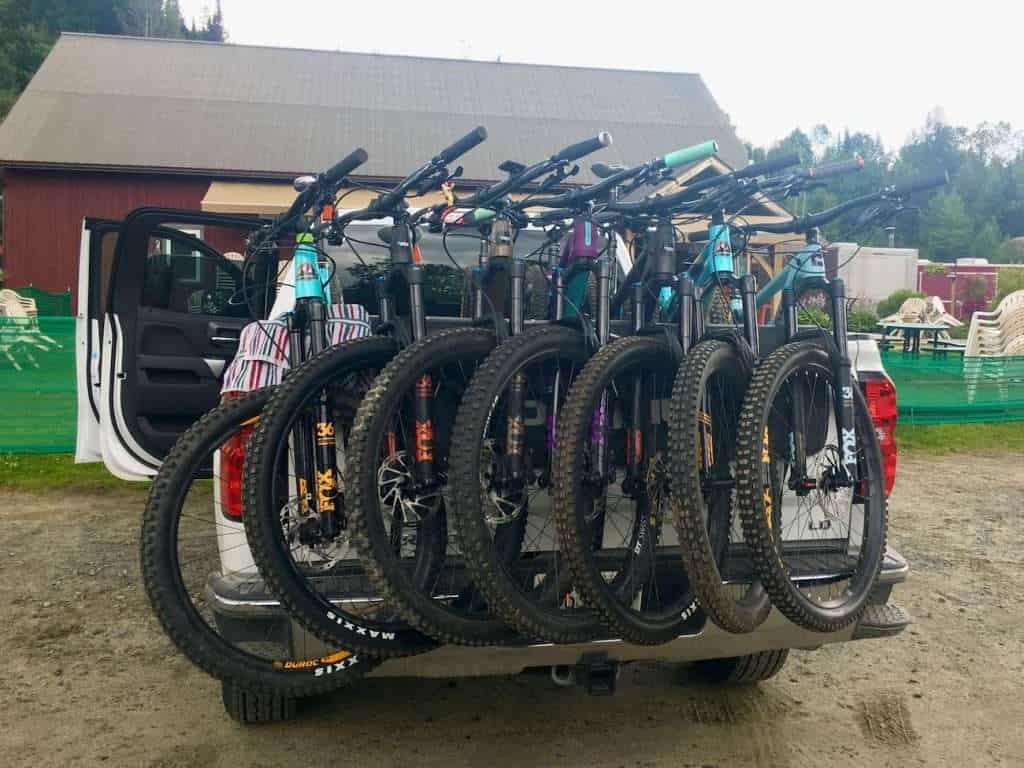
Tips For Improving your skills and confidence
So now that you’ve realized that mountain biking is the best sport in the world and you want to ride your bike every day, how can you get better and improve your skills quickly?
In addition to the three tips below, I have a list of 10 Tips For Beginner Mountain Bikers that covers a few more basics, so be sure to check that out as well.
Take a lesson
Signing up for a lesson or clinic is a great way to learn some basic (or advanced) skills and build confidence on the bike.
Bike Parks are a great place to get a lesson since you can do multiple laps in a day and most bike parks offer private lessons.
Ladies AllRide or Dirt Series are also great resources and they have clinics all over the US and Canada as does Ninja Mountain Bike Performance.
Ride with people who are better than you
It may be intimidating at first, but riding with people who are better than you can really up your skills and confidence quickly.
If there’s a feature or obstacle that you’re stuck on, but your friend can cruise through smoothly, take a few minutes and session it together. See what line they choose and how they position their body.
Watching better riders will make you a better rider.
Ride different trails and terrain
The more diverse trails and terrain you ride, the better rider you will become. Starting out on your local trails is a great way to start, but once you feel comfortable on them, start looking farther afield.
Whether that’s the next mountain bike network over or a few states over, switching up your rides will make a huge difference when it comes to building skills and fitness.
Final thoughts
And that’s a wrap! This is a huge post with a lot of information on how to start mountain biking.
Hopefully, it was helpful and has inspired you to give mountain biking a try. Mountain biking is an amazing way to have fun and explore beautiful places around the world.
RELATED POSTS
Want to dive deeper? Here are more blog posts to help you get started with mountain biking:
Are you just learning how to start mountain biking? What questions do you still have? What skills are you working on? Leave a comment below!


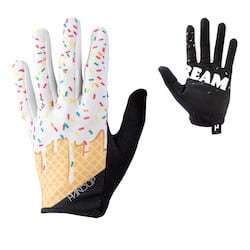
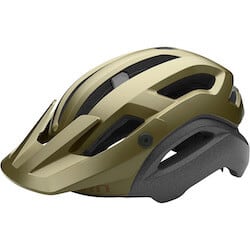



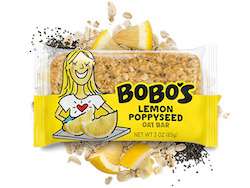

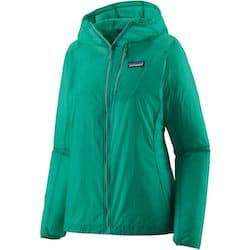

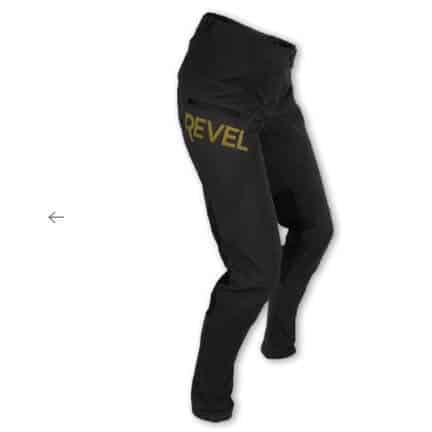


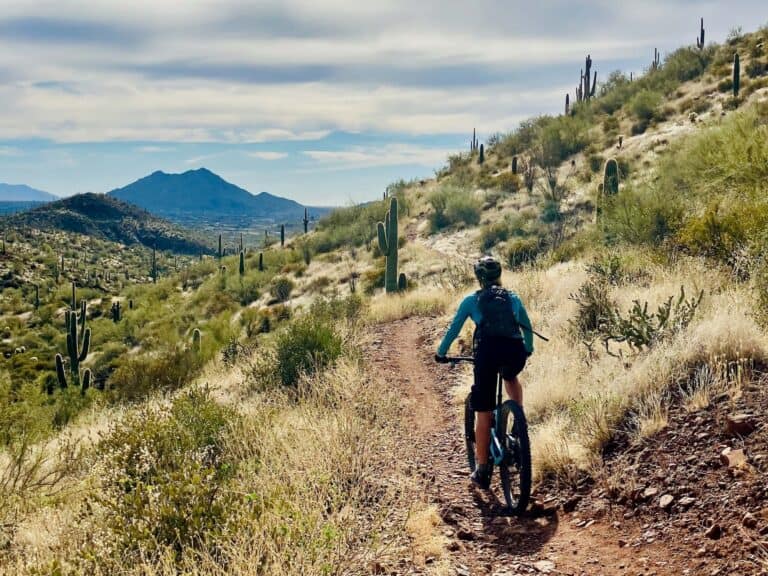
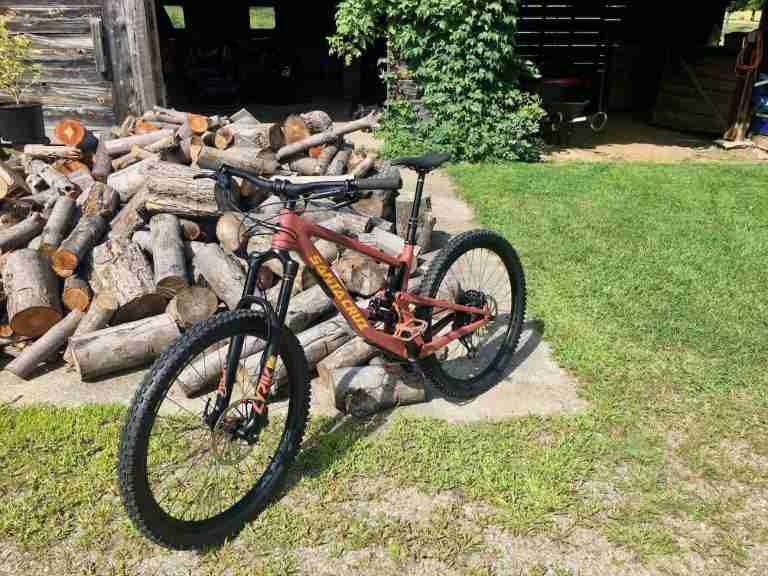
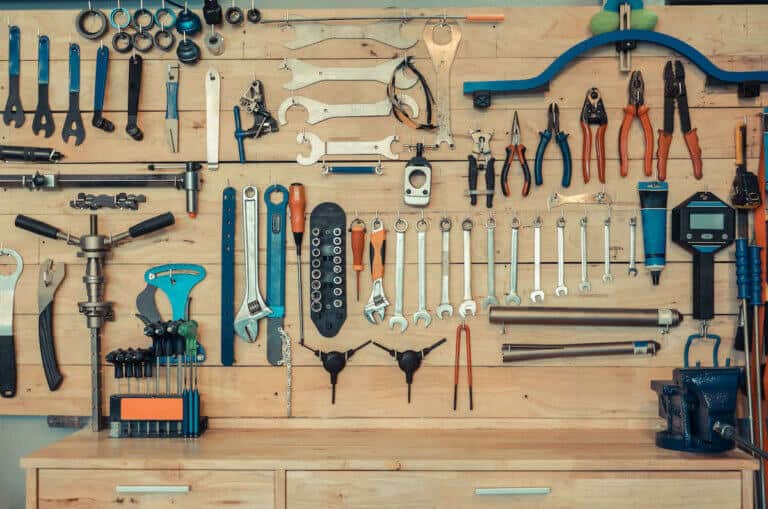

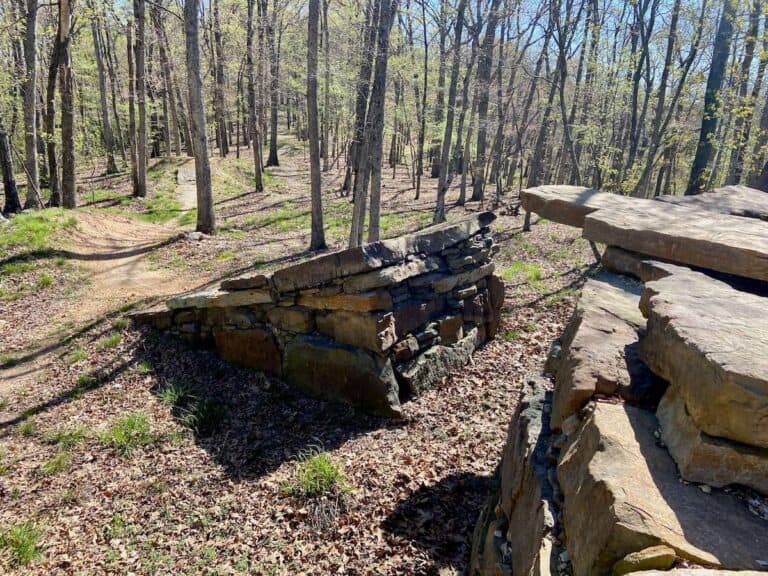
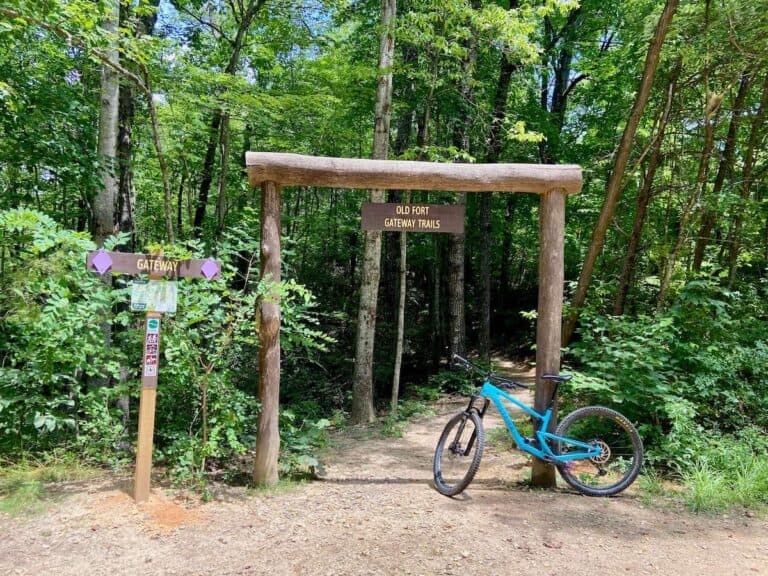
Get the right size bike before hitting any serious trails. The bike is an extension of the rider, and the right size bike feels like a natural extension.
Agreed, bike size is super important!
Hi Becky
I’m interested to start mountain biking and am very motivated by this post. Thank you the helpful and comprehensive post for beginners. I’ve benefited a lot from the wealth of information. Keep up the excellent work! I’ve subscribed to your blog and will keep supporting your effort.
Cheers
Vivien
Glad you found it helpful, Vivian! Feel free to reach out via email as well if you have any questions 🙂